#mortuary archaeology
Text
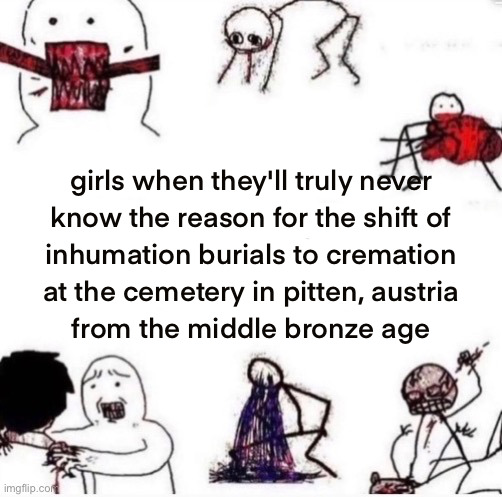
28 notes
·
View notes
Text
Reading today’s Dracula Daily reminded me AGAIN of a really good article I read a few years back about how at least some vampire mythology is likely inspired by the symptoms of Tuberculosis in times before germ theory was widely understood or accepted:
how victims slowly wasted away, but would unpredictably get worse or better over time before they actually died,
how those around them were likely to get infected after a delay and start wasting away themselves (as if their life force was being drained by the first person who got ill...), etc. etc.
Anyway, I tracked down the article! Still need to re-read it myself, but from what I recall it’s well worth a read if you like vampires, archaeology, and history!:
https://www.smithsonianmag.com/history/the-great-new-england-vampire-panic-36482878/
(It’s also about a fascinating period during the 1800s in rural New England when townspeople kept exhuming the graves of people they suspected may have been vampires in order to perform rites to stop them from rising again!)
221 notes
·
View notes
Text
Why didn't someone tell me that researching a niche area of archaeology would be difficult... its almost as if there's barely any research on this... who could have known... :'D
#archeology#archaeology#prehistory#prehistoric#research#EPQ#arabian peninsula#palaeolithic#neolithic#ancient history#classics#dark academia#dark acadamia aesthetic#burial practices#mortuary archaeology#burial rites#research project
2 notes
·
View notes
Text


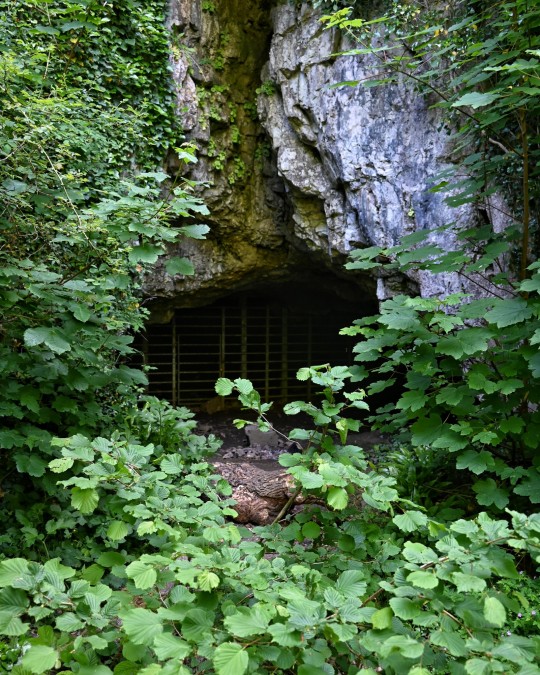
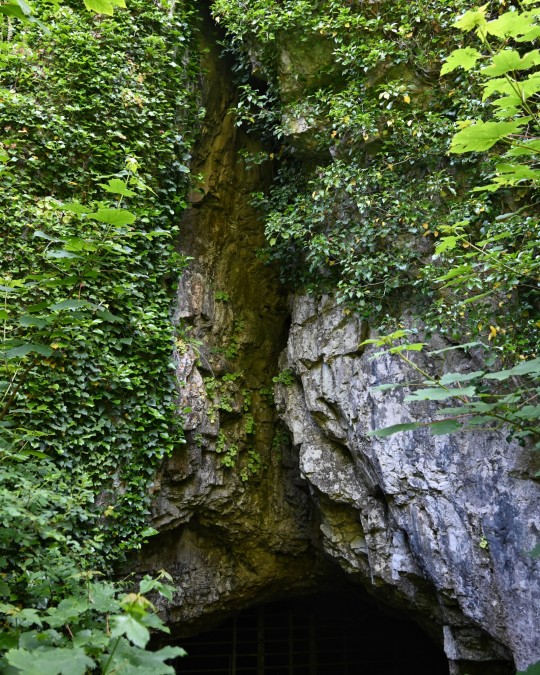
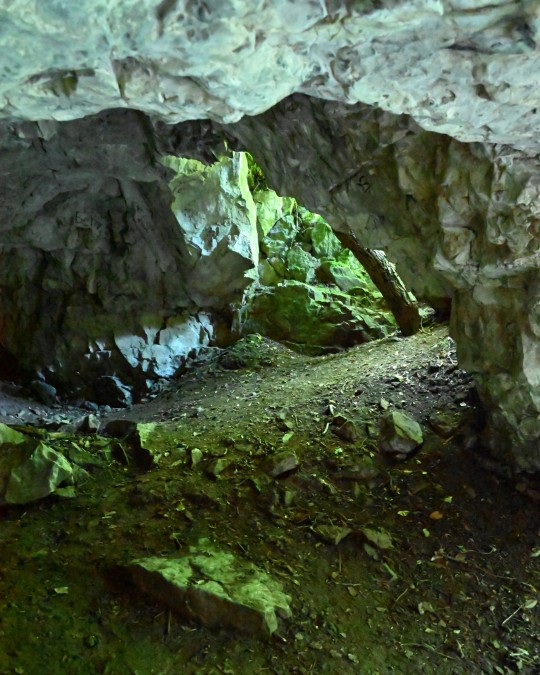

Cathole Cave Prehistoric Site and Neolithic Mortuary, Gower Peninsula, nr. Swansea, Wales
#ice age#stone age#bronze age#copper age#iron age#neolithic#mesolithic#calcholithic#paleolithic#prehistoric#prehistory#caves#cavern#cave living#archaeology#ancient living#ancient sites#mortuary#ritual#wild places#wales#cathole cave
193 notes
·
View notes
Text


Mortuary Temple of female pharaoh Hatshepsut at Deir el-Bahari.
EGYPT FROM ABOVE (2020) — (1.01) Egypt's Ancient Empire
#egypt#ancient egypt#egyptology#archaeology#historyedit#mine#my edit#documentary#hatshepsut#deir el bahari#luxor#mortuary temple#18th dynasty
226 notes
·
View notes
Text
anyway it turns out going to a talk about Your Local Early Medieval Cemetery *is* what would cure me
24 notes
·
View notes
Text

Eroded statue of Princess Iset, daughter of Amenhotep III & Queen Tiye, found within the remnants of the king's mortuary temple in modern Luxor by the “Colossi of Memnon and Amenhotep III Temple Conservation Project at Kom el-Hetan”, fronted by Dr. Hourig Sourouzian, 2014.
17 notes
·
View notes
Text
'this is a juan, not a juanita' dios mio...
#mhac.txt#i shouldn't laugh so hard at that#also the cruise part of that [ask a mortician] video makes me want to do.#well i don't know if it's a subsection of medical anthro but. some kind of anthro (or maybe even social work) that.#connects people and mortuary practices like funerals. obviously there's plenty of archaeological and cultural study of practices themselves#but making that linkage between clients and homes. especially to up the competence of the homes (or even cruise lines)
1 note
·
View note
Text
The deep past of ancient Egypt is carved in stone at Abydos, where the Mortuary Temple of Seti I houses the renowned list of 76 Egyptian kings, one of the most valuable pieces of evidence on Egypt’s history.
Despite the valuable information it includes, many kings of the time did not make the list. But why?
26 notes
·
View notes
Text
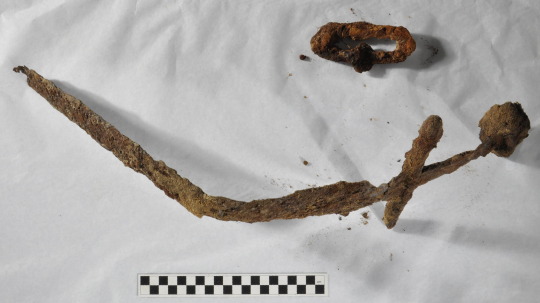
1,000-Year-Old Crusader Sword and Cemetery Found in Finland
Researchers identified eight burials, but they say the graveyard may hold dozens—or even hundreds—waiting to be discovered.
Archaeologists in Finland have unearthed a graveyard, an iron sword and other artifacts that date back roughly 1,000 years.
Over the summer, a landowner stumbled upon the site when he was installing geothermal pipes on his property in the small town of Salo. After a rainy day, he noticed something strange sticking out of the ground and decided to investigate.
He pulled out a rusty but intact iron sword with a bent blade, a straight hilt and an oval pommel. The landowner alerted Juha Ruohonen, an archaeologist at Finland’s University of Turku, who called in Sanna Saunaluoma, an archaeologist at the Turku Museum Center.
Thinking the site would yield more discoveries, the researchers decided to continue excavating. And they were right: They found human bones, clothing remnants and something they suspect to be a wooden coffin.
They also uncovered an elaborately decorated leather belt, which a statement from the University of Turku described as “remarkable,” per Google Translate. Attached to the partially preserved leather, they found 30 square bronze rings and cross-shaped pendants, as well as a buckle, strap dividers and several animal head buckles.
They say all of these artifacts belonged to one grave, which is particularly interesting because “archaeological textiles related to men’s graves are very rare,” per the statement.
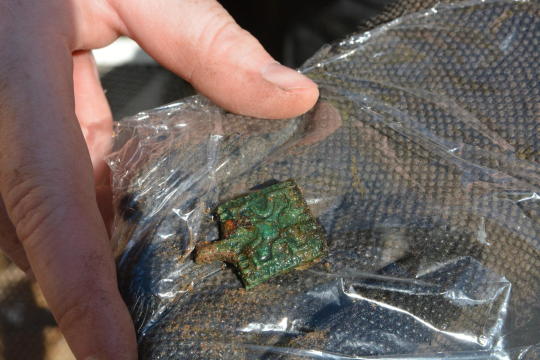
As they continued to scour the area, they discovered eight graves, which they suspect are part of a much larger mortuary cemetery. All told, the researchers say the site could hold dozens—or even hundreds—of graves. The burials discovered so far appear to follow Christian customs.
Radiocarbon dating is currently underway. The researchers suspect the bones and artifacts date to between 1050 and 1150 C.E., a period they call the Crusader era.
During this time, the Swedes supposedly brought Christianity to Finland in an event known as the First Swedish Crusade. However, “no corroborating archaeological data” exists for this event, which first appears in written records in the late 13th century, writes Heritage Daily. “Academics debate whether this crusade actually took place.” The discoveries could help shed new light on this mysterious period in Finland’s religious history.
The graves and artifacts were found beside a medieval stone church, which experts thought had been established in the 15th century. However, the new finds suggest there was a “much earlier church organization” in the area than they previously assumed, per the statement.
“The observation can be considered very significant from a research point of view, as mortuary cemeteries from the time of the Crusades are clearly less known in Finland than cremation cemeteries that preceded them in time,” per the statement. “So far, this is also the only confirmed burial burial dating to the end of the Iron Age from the Salon or Uskelanjoki valley.”
Looking ahead, the researchers say they will continue working at the site and analyzing their discoveries until at least 2024.
By Sarah Kuta.
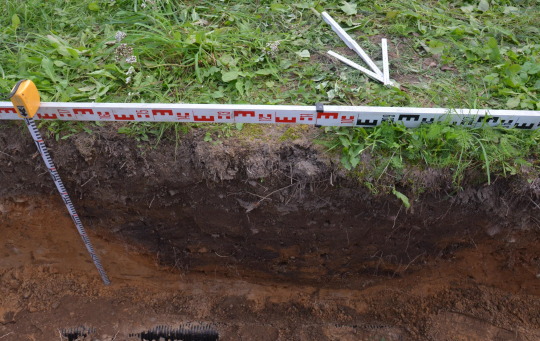

#1000-Year-Old Crusader Sword and Cemetery Found in Finland#Salo Finland#ancient grave#ancient tomb#ancient sword#ancient artifacts#archeology#archeolgst#history#history news#ancient history#ancient culture#ancient civilizations#iron age#crusader period
25 notes
·
View notes
Text
free summer reading groups in ancient studies
howdy <3 Saving Ancient Studies Alliance (SASA) in a volunteer-driven nonprofit that works to stimulate interest in the ancient studies and combat downward trends in humanities education across the globe. to support this mission, they're offering 16 FREE summer reading groups. check below the cut for more info.
Painted Stories: Reading Maya Mythology in Codex-Style Ceramics, June 1-29, Thursdays at 4PM EST: This reading group introduces participants to key mythological themes in Classic Maya (250-900 CE) material culture, particularly as seen on a subset of ceramic vessels known as "codex-style" vessels. No prior knowledge is necessary. RSVP HERE
The Alexander Romance, June 2-30, Fridays at 11AM EST: This reading group introduces participants to the ancient reception of Alexander the Great, with a focus on the Alexander Romance. Attend to join discussions of the ancient Macedonian hero through texts in translation. No prior knowledge is necessary. RSVP HERE
Is This Your Neighbor, Is This You? Looking at Others and Ourselves in Theoprhastus' "Characters," June 2-16, Fridays at 2PM EST: This reading group introduces participants to philosopher and natural scientist Theophrastus (371-287 BCE) and his thirty unsavory "Characters" inspired by real citizens of ancient Athens. Explore the ideas of stereotype and ethics, and examine modern methods of perception. No prior knowledge is necessary. RSVP HERE
Mother, Murderer: Medea's in Antiquity and Beyond, June 4- July 2, Sundays at 3PM EST: This reading group introduces participants to Medea, the infamous Colchian princess who endures in ancient mythology and beyond. Readings will range from Euripides and Ovid to Toni Morrison. Discussion will explore themes of revenge and gender studies. No prior knowledge is necessary. RSVP HERE
True Stories: Classical Sci-Fi and Fantasy, June 5-July 3, Mondays at 5PM EST: This reading group will introduce participants to the relationship between Classical works and the genre of science fiction. Discussions will explore similarities and differences through exciting themes of fictional empires, Roman utopia, and spaceships. No prior knowledge is necessary. RSVP HERE
Beyond the Silk Roads: June 8-July 6, Thursday at 9AM EST: This reading group will guide participants through the "Silk Roads" with a particular focus on Central Asia. Discussion will focus on pre-modern globalization, through primary source readings such as the Sogdian merchants' letters and Dunhuang texts. No prior knowledge is necessary. RSVP HERE
She's Just Not That Into You: Unrequited Love in Antiquity, June 8-July 6, Thursdays at 2PM EST:This Reading Group will guide participants through the theme of unrequited love in antiquity, and explore how tales of love and rejection are universal and timeless. Readings include translated texts of ancient poets, such as Sappho and Horace. No prior knowledge is necessary. RSVP HERE
The Pyramid Texts: The Earliest Egyptian Rituals, June 8-July 6, Thursdays at 3PM EST: This Reading Group will guide participants through the oldest religious literature in the world: the Ancient Egyptian Pyramid Texts. Discussions will explore beliefs and myths as present in the mortuary texts, and how they manifested in rituals. No prior knowledge is necessary. RSVP HERE
Tomb Robberies in Ancient Egypt: Prevention, Persecution, and Punishment, June 13-27, Tuesdays at 11:30AM EST:This Reading Group will introduce participants to the methods of Egyptology through primary texts and archaeological sources. With a focus on the Late New Kingdom, discussions will explore the questions of who and why involving tomb-robbing, and traditions of funerary practices. No prior knowledge is necessary. RSVP HERE
Atoms and Void: Lucretius' "On the Nature of Things," June 13-July 11, Tuesdays at 1PM EST: This Reading Group will introduce participants to the great Latin epic De Rerum Natura (On the Nature of Things), and its author Lucretius' key ideas of Epicureanism. Discussions will explore the poem's provocative ideas on pain and pleasure, and how they have impacted early modern science. No prior knowledge is necessary. RSVP HERE
Reading the Abbasid Past: History and Islamic Heritage, June 14-28, Wednesdays at 11AM EST:
This Reading Group will guide participants through the era of the Abbasid Caliphate, or the "Golden Age" of the Islamic World. Exploring a wide range of themes including science, philosophy, and art, discussions will explore the fascinating socio-political lives of the affluent Abbasids and their impact on present-day materials and heritage. No prior knowledge is necessary. RSVP HERE
Queer Lives and Loves in Ancient History, June 14-July 12, Wednesdays at 1PM EST: This Reading Group will use Queer Theory to explore and uncover evidence of LGBT+ lives in the Ancient World. Readings will involve Ancient Greek, Latin, and Near Eastern literature, and participants will be encouraged to challenge Western norms of identity, and modern approaches to historic interpretation. No prior knowledge is necessary. RSVP HERE
Curse Tablets: Personal Communications with the Dead and the Gods in the Ancient World, June 16-30, Fridays at 2PM EST:This Reading Group will explore the relatively unknown realm of curse tablets in the Ancient World. Through evidence left behind by women, men, and slaves over the span of 1,000 years in history, discussions will explore the motivations and consequences of such writings. No prior knowledge is necessary. (RSVP link broken)
Defying the Gods, and Forgotten Female Rage, June 18-July 30, Sundays at 11:30AM EST:This Reading Group will encourage participants to explore the representation of women in heroic tales through significant ancient texts such the Epic of Gilgamesh and Homer. Discussions will focus on the tragedy and anger of female characters in epics, who primarily appear as accessory to male heroism. No prior knowledge is necessary. RSVP HERE
From Harlots to Heroines: Royal Women in the Hebrew Bible, June 29-July 13, Thursdays at 12PM EST: This Reading Group will focus on three royal women in the biblical texts: Jezebel, Esther, and the female lover in the Song of Songs. Reading and discussions will explore primary sources, and how engendered narratives highlight writer bias and impact modern interpretations. No prior knowledge is necessary. RSVP HERE
Unlocking Beowulf, August 4-18, Fridays at 11AM EST:This Reading Group will explore Beowulf as a reflection of both the Norse and Anglo-Saxon worlds. Participants will gain a cultural and historical understanding of the poem, and explore various issues of identity, politics, gender, and nation-making in the Early Middle Ages. No prior knowledge is necessary. RSVP HERE
48 notes
·
View notes
Text

Ancient Egyptian jar (calcite, filled with cedar resin), bearing the cartouche of the 18th Dynasty female pharaoh Hatshepsut (r. ca. 1479-1458 BCE). Found near Hatshepsut's mortuary temple at Deir el-Bahari; now in the Petrie Museum of Egyptian Archaeology, London. Photo credit: Osama Shukir Muhammed Amin FRCP/Wikimedia Commons.
#art#art history#ancient art#Egypt#Ancient Egypt#Egyptian art#Ancient Egyptian art#cartouche#Hatshepsut#18th Dynasty#New Kingdom#Deir el-Bahari#Petrie Museum of Egyptian Archaeology
88 notes
·
View notes
Text

The "Spiro Lace", a charred fragment of finely woven cloth found in Craig Mound in the Spiro Mounds Archaeological Site, Oklahoma, United States. Dated circa 1250-1450 CE.
Analysis of textiles found at Spiro reveals that the principal plant fibers used in textile manufacture were canebrake, paw paw, milkweed, and beargrass. Milkweed was likely the plant chosen for making intricate fabrics like this lace textile. Milkweed fibers are not very coarse, and so they are better suited to forming fine threads and cords. Scholars have determined that people at Spiro would cover the surface of the plant fibers with animal furs or feathers to make their textiles softer.
Between 1933 and 1935, Craig Mound was excavated by a commercial enterprise that had bought the rights from local landowners to excavate and to keep or sell the artifacts they recovered. Tunneling into the mound and breaking through the Great Mortuary's log wall, they found many human burials, together with their associated grave goods. They discarded the human remains and the fragile artifacts—made of textile, basketry, and even feathers—that were preserved in these extremely unusual conditions.
Similar fabrics have been uncovered in burials at a Mississippian site in Etowah, Georgia, and the manufacture of this textile style at Spiro could indicate its broader cultural ties.
104 notes
·
View notes
Note
I want to ask about so many of your wips, they sound amazing!! But I'm going to restrain myself and ask for only one, I'd love to know more about A sorta fairytale, if you're willing to share👀💜
SO WILLING (also you are *lovely*, tysm <333).
so, I have a thing for small-town museums/historical societies. specifically, how weirdly comprehensive and elaborate they can be, despite obviously limited resources/potential audience scope. and they have all kinds of mundane shit that, collectively, becomes a material history of the town/surrounding county (and thereby functionally a cultural archives resource). to the extent that there are actual research centers with fairly extensive archives collections in what are otherwise middle-of-nowhere towns. and I recently learned that a lot of these orgs also have mortuary archaeology/cemetery studies departments.
and then I decided to put one of those in Wayhaven (also, not that it super matters, but I decided Wayhaven is in Michigan. for reasons.).
disregarding the question of why she would ever come back to Wayhaven absent the canon storyline, if Holland *did* end up back in her hometown, she would obviously NOT choose to be a cop lmao. but she WOULD be very suited to mortuary archaeology (look, she doesn't get to work in a lab in canon, I am giving her one in my au).
as to why Nate's in Wayhaven: he's doing research for a book related to social history and material culture in the rural Midwest. and Wayhaven just so happens to have a reasonably impressive archives gallery with relevant materials.
and maybe the first day he visits the gallery, Holland just so happens to be filling in for the person who's usually at the research desk.
and maybe that chance meeting results in lots of flirty banter and subsequent research montages. maybe there's also a road trip. who's to say? (me. I am to say. there are ALL of those things. there is also a dog.)
wip title ask game
#this is the most succinct version of my synopsis notes lmao#everything I do is self-indulgent but this is truly twirling-my-hair kicking-my-feet-and-giggling levels of self-indulgent#(and good for me.)#answered#sustainably-du-mortain#kt wips
9 notes
·
View notes
Text

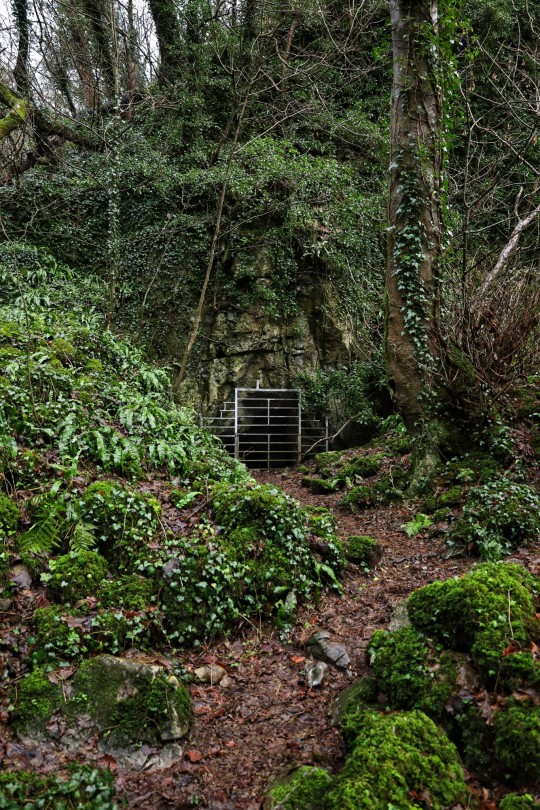



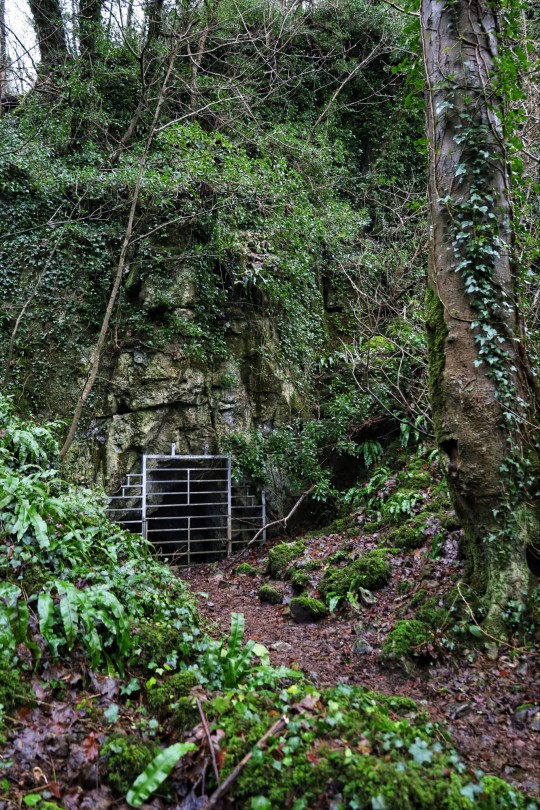
Cathole Cave Neolithic Mortuary, Gower Peninsula, nr. Swansea, Wales
#ice age#stone age#bronze age#copper age#iron age#neolithic#mesolithic#calcholithic#paleolithic#prehistoric#prehistory#cave#mortuary#archaeology#ritual#wales#gower peninsula#cathole cave#ancient culture#ancient living#ancient beliefs
46 notes
·
View notes
Text


EGYPT FROM ABOVE (2020) — (1.01) Egypt's Ancient Empire
#egypt#ancient egypt#egyptology#archaeology#historyedit#mine#my edit#documentary#doc: egypt from above#medinet habu#ramesses iii#luxor#thebes#mortuary temple
123 notes
·
View notes